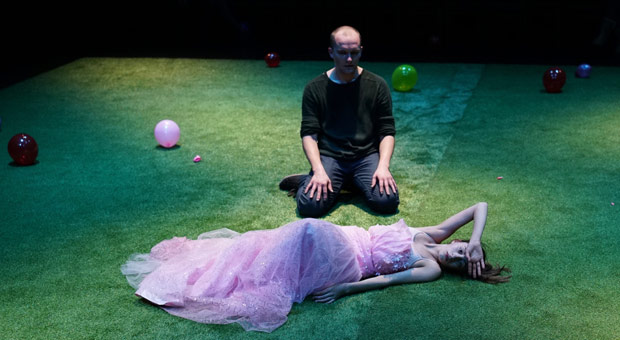
© Bosie Vincent. (Click image for larger version)
Vincent Dance Theatre
Virgin Territory
★★★✰✰
London, The Place
4 November 2016
www.vincentdt.com
virginterritory.org
www.theplace.org.uk
Today’s society is riven with the tensions of contradiction. Havens that might once have been considered safe barely exist anymore. I write this before the result of the US Presidential Election is known but, win or lose; Donald Trump has changed politics in America, perhaps forever. Things are being said by him in the final days of the campaign that could not have been said in American politics, even one year ago. Can one ever imagine any former presidential candidate having to justify using the “pussy” word – let alone in the context of “grabbing” it – and still remaining a contender for the highest office until the home straight?
Our rapidly changing world lies at the heart of Charlotte Vincent’s Virgin Territory, which concentrates all its attention on the sexualisation of children; by society, by predators, by parents and – in responding to these external images – by themselves. It is a deeply uncomfortable work, made all the more so in Vincent’s stroke of genius to cast four child performers alongside four adults.
The performance is given on a square of artificial grass with the audience arranged around it on all four sides and the eight cast members entering from gaps between the background screens in the four corners. The grass represented – amongst other things – a park for dogs to run around, a venue for Morris Dancing, a playing field and an allotment.
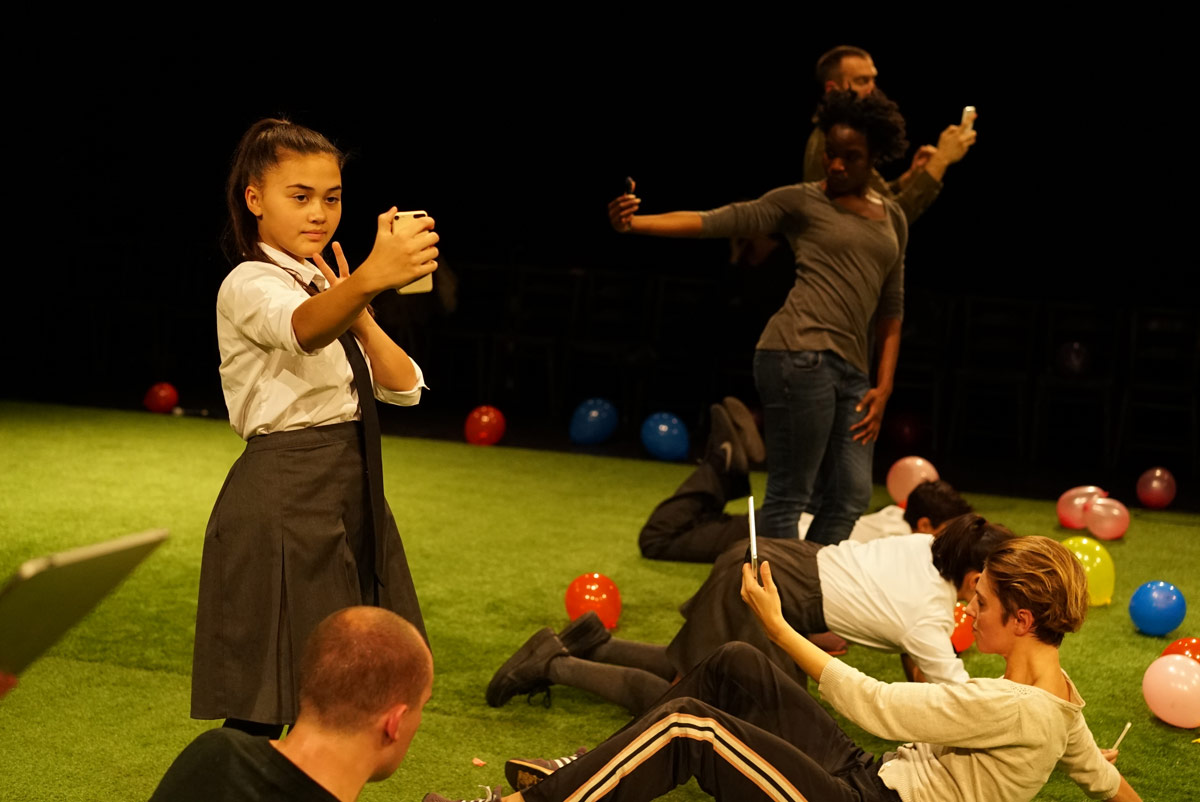
© Bosie Vincent. (Click image for larger version)
It would have been hard for a man to make this work; it’s hard enough for a man to watch it. In the most uncompromising scene, Janusz Orlik – a 30-something balding guy – and Maia Faulkner, one of the child performers (and, it later transpired, an expert tumbler), mimic an online conversation between a predatory paedophile and his intended victim by speaking through microphones in deliberately hushed tones while facing each other across the grass. The mix of everyday and sexualised comment was deeply disturbing, made even more so by the later voiceover explanation of the “Sweetie” sting, where a computer animated child (purporting to be a ten-year-old Filipina girl), was contrived by a children’s rights organisation (Terre des homes) to lure online paedophiles into providing their identities. In ten weeks, over a thousand men (from 71 countries) gave “Sweetie” enough information to be identified.
The achievement in Vincent’s work is to make one question what is now right, or appropriate; and how perhaps seemingly-innocent remarks might now be perceived. A young girl in a pink tulle fairy dress wants people to find her to be as pretty as the Disney Princess to whom she aspires but is it OK for a man, or even a woman, nowadays, to give her that affirmation?
The torch that Vincent shines on the dichotomies in modern life is searching. It illuminates the world in which sexualisation of the young is exploited routinely: in advertising, in TV programmes, in songs, and by the ever-present smart phones and tablets with their quick and easy access to all of life on the internet and a daily diet of selfies. A sequence where the eight performers take selfies of themselves and with the audience was funny, as was the Morris Dance in which the performers waved knickers instead of handkerchiefs (though I confess to being unsure of the point being made; I’ve never previously seen anyone under the age of 60 doing a Morris Dance)!
The sudden switches from deeply disturbing material to riotously funny moments provided a roller-coaster ride. The iconic images of Antonia Grove (how great to see her performing again) in blonde “Barbie” wig, short dress and stilettoes, strutting sexily across a grass diagonal, pausing at the end to pout at the audience, were uncomfortably followed by the three young girls attempting to replicate her sexiness in every detail. In another even more disturbing exaggeration of that sequence, breasts, muscles and bums were made grotesquely bigger with balloons inside the clothing allowing Valerie Ebuwa (an extraordinary dancer) to give my side of the theatre a virtual lap dance that was more suited to Stringfellows than The Place.

© Bosie Vincent. (Click image for larger version)
Notwithstanding the strength of the performance as social commentary in an image-obsessed, over-sexualised world, there were also several sections that outlasted their purpose, such as when performers ran at each other from opposite corners finishing in a wrestling hold or tussling one-another to the floor (repeated in a different way, later); the sequences of barking “dogs” (although Grove managed to sound unsettlingly like my Border Terrier); and the unnecessarily long ending in which soil was deposited from a wheelbarrow to create a diagonal stripe across the grass into which plants were set. It was a work that could probably do with a 15-minute edit to make it even more hard-hitting.
Donald Trump’s “locker room” talk and his assertion that it is just harmless fun amongst guys might have been added to Vincent’s vox-pox voiceovers had it not come after Virgin Territory was made. One of Trump’s campaign supporters told Fox News, “Ladies….this is what guys are about when you’re not around. So, if you’re offended by it, grow up, OK”. Plenty of material for Virgin Territory 2, it seems.












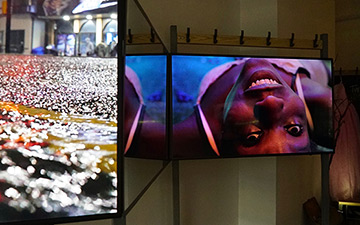
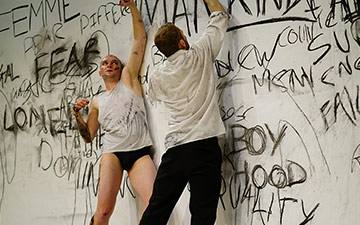

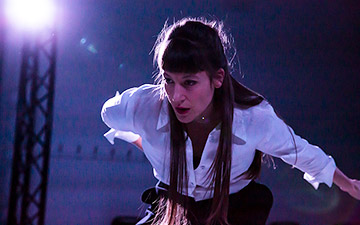

You must be logged in to post a comment.